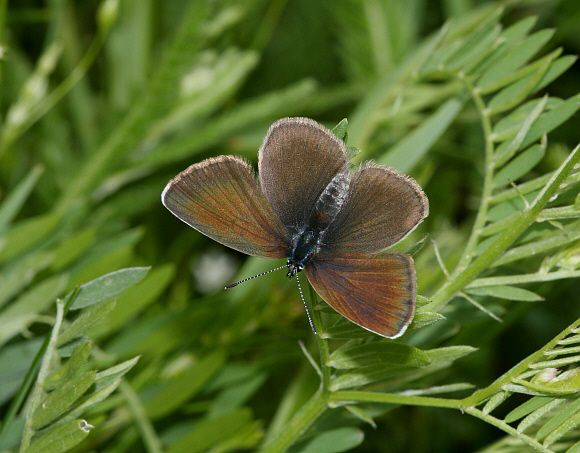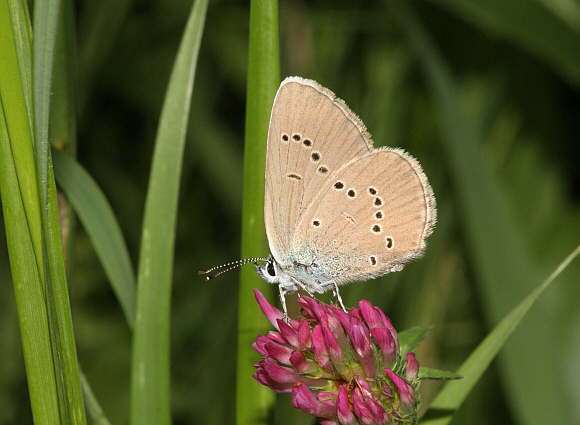
Cyaniris semiargus, male, Kercaszomor, Őrs�g, Hungary – Peter Bruce-Jones
Introduction
The Global Lepidoptera Names Index recognises 44 valid Cyaniris species. Most are confined to the Oriental region, inhabiting cloudforests and temperate high altitude grasslands in Bhutan, Thailand, Borneo, Sumatra, China and Papua New Guinea. Only one species occurs in Europe: semiargus.
Cyaniris are closely allied to Cupido and have very similar undersides. Both genera are treated as subtaxa of Polyommatus by some workers, but recent molecular studies prove they are distinct.
Cyaniris semiargus is a species which has a confusing taxonomy, with no less than 66 synonyms having been applied by various workers. There are 28 valid subspecies distributed from Spain and Morocco to Siberia, China and Korea.
 Cyaniris semiargus, male, Jadovno, Velebit mountains, Croatia – Peter Bruce-Jones
Cyaniris semiargus, male, Jadovno, Velebit mountains, Croatia – Peter Bruce-Jones
Habitats
This species inhabits flowery fields, sub-alpine hay meadows, scrubby grassland, riverbanks and woodland clearings at elevations between sea level and about 2800m according to location.
 Cyaniris semiargus, female, Trnovac, Gospič, Croatia – Peter Bruce-Jones
Cyaniris semiargus, female, Trnovac, Gospič, Croatia – Peter Bruce-Jones
Lifecycle
In Europe the eggs are laid singly on the flowers of Trifolium pratense and T. physodes but several other Trifolium species are utilised in temperate Asia. The larvae feed at first on the flowers. They overwinter under stones close to the foodplants. Upon reawakening in the spring they commence to feed on the young leaves. This species has a highly evolved symbiotic relationship with Lasius and Camponotus ants which milk the larvae for a sweet secretion produced from a Newcomers gland on the 7th abdominal segment. Pupation usually occurs near the entrance to ant nests. The pupa uses chemical defence in the form of pheromones which attract ants but at the same time appease them. The presence of the ants deters other predatory or parasitoid insects. It seems likely that the newly emerged adult butterfly also uses pheromones to appease ants until it has expanded and dried its wings and is ready to fly.

Cyaniris semiargus, female, Trnovac, Gospič, Croatia – Peter Bruce-Jones
Adult behaviour
Males often aggregate in large numbers at seepages, urine patches or animal droppings from which they obtain minerals that are passed to females during copulation. Both sexes nectar avidly at a wide range of flowers but favour trefoils and clovers. In late afternoon they seek sheltered areas of tall grass where they roost communally on grass heads, adopting a head-downwards posture.
